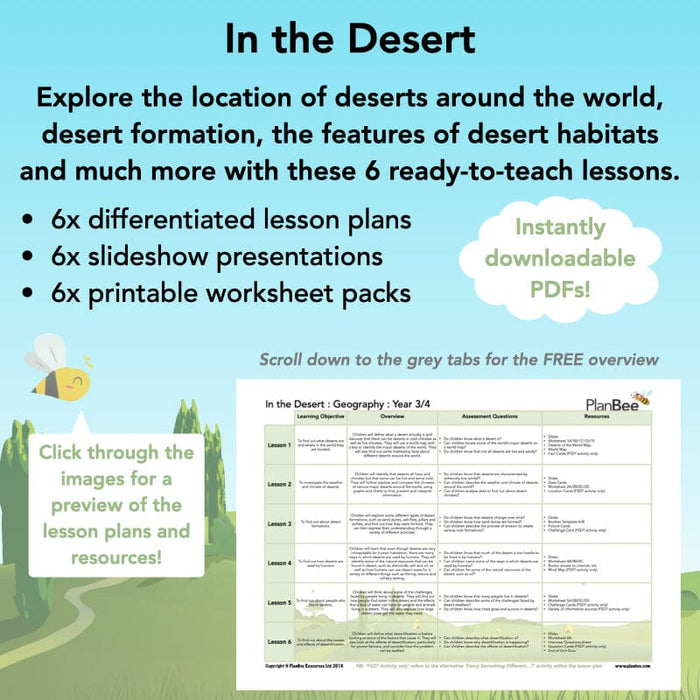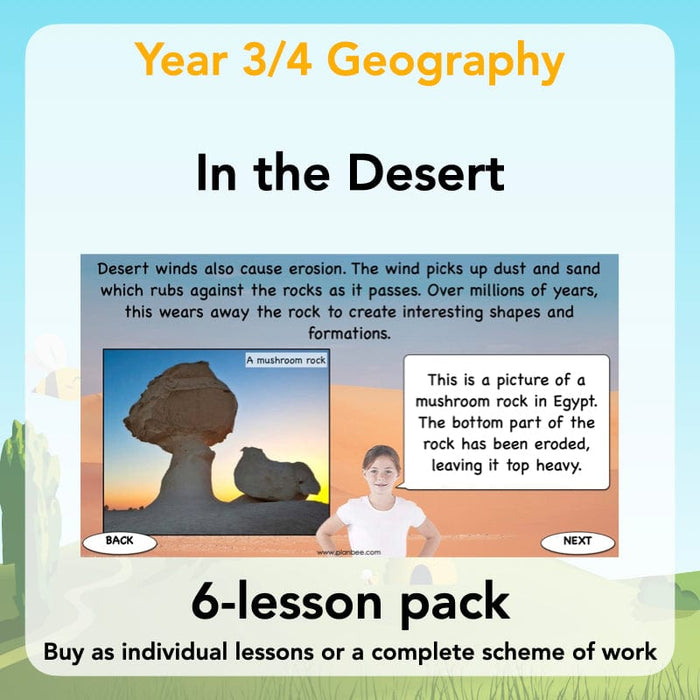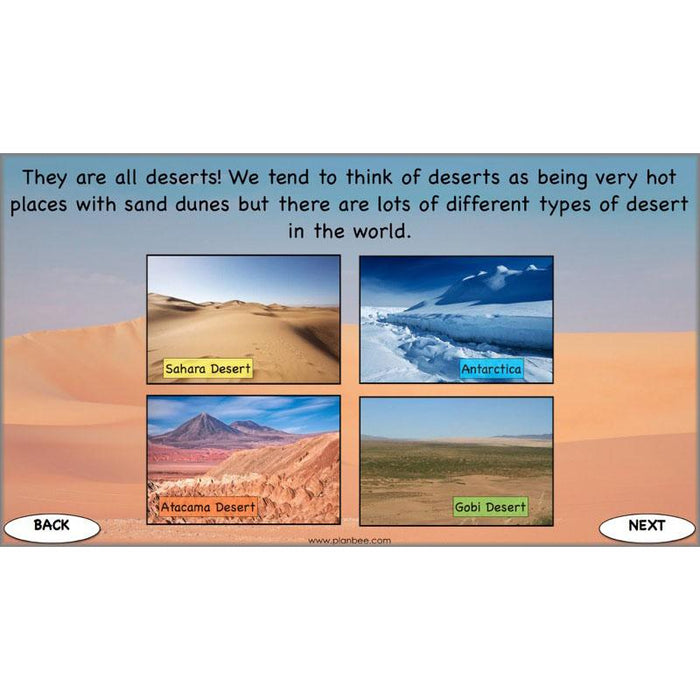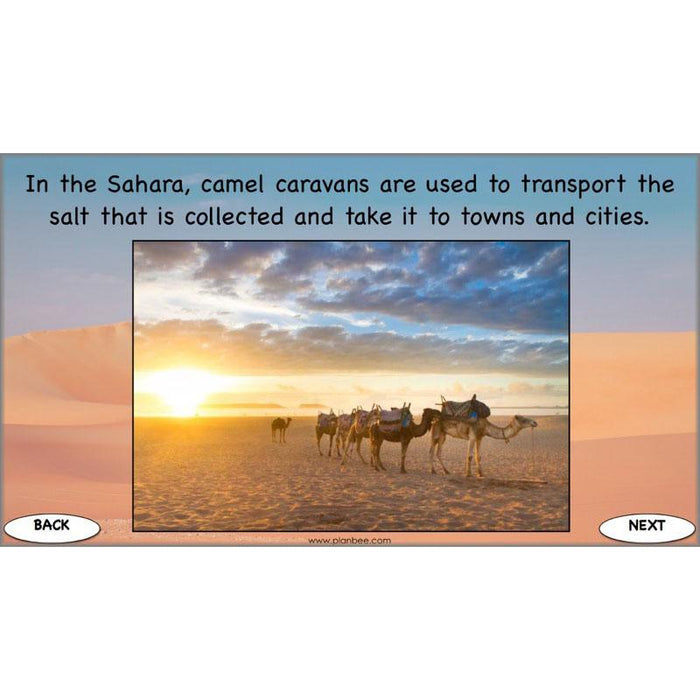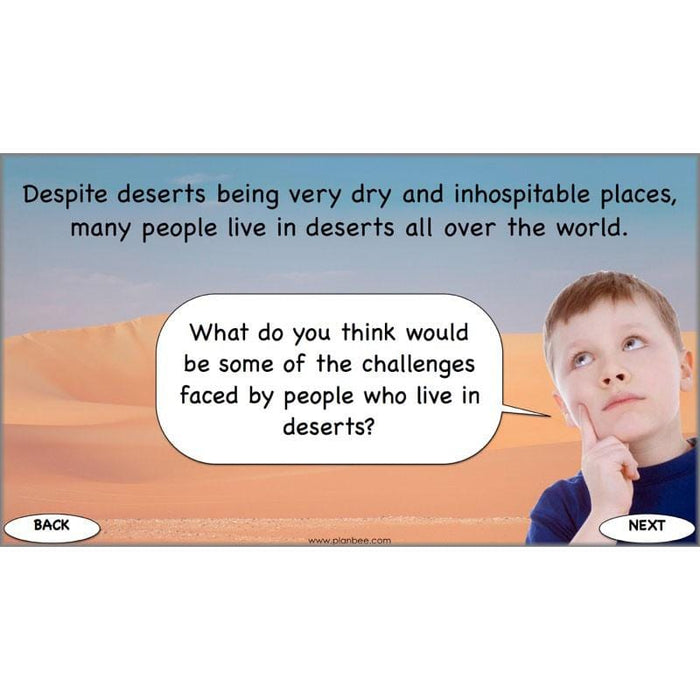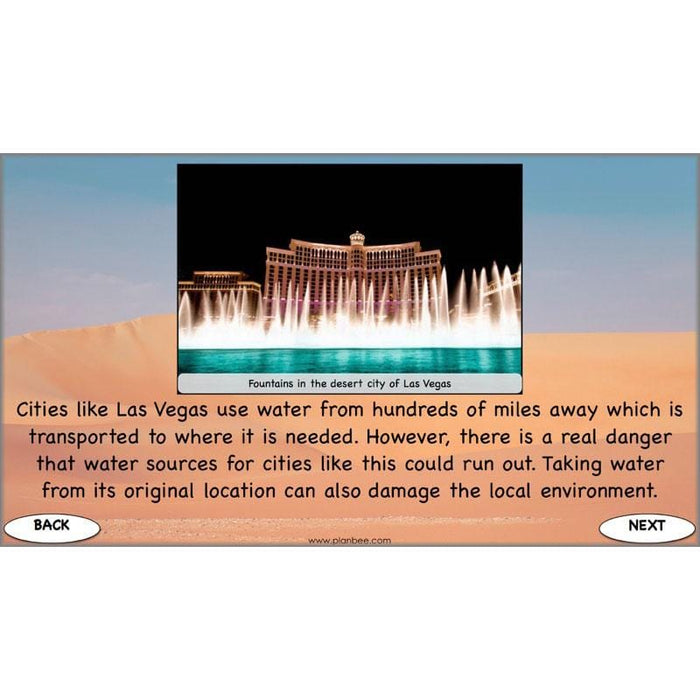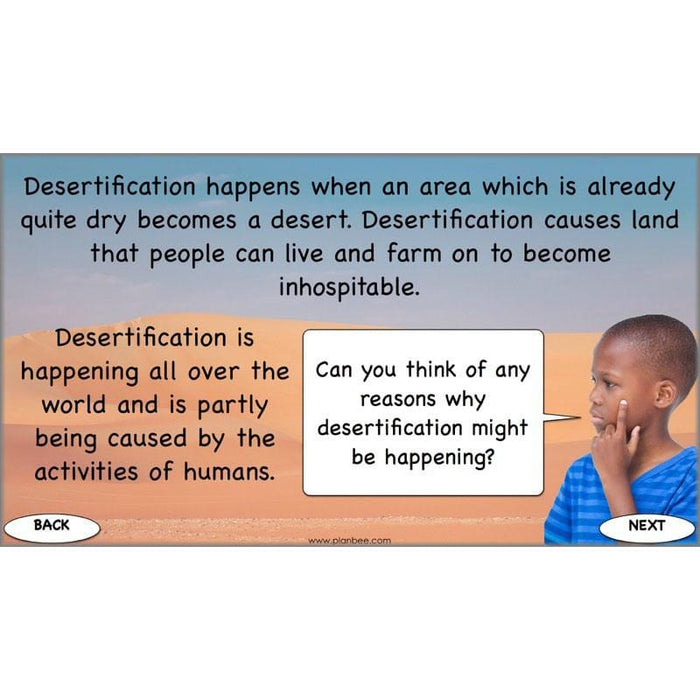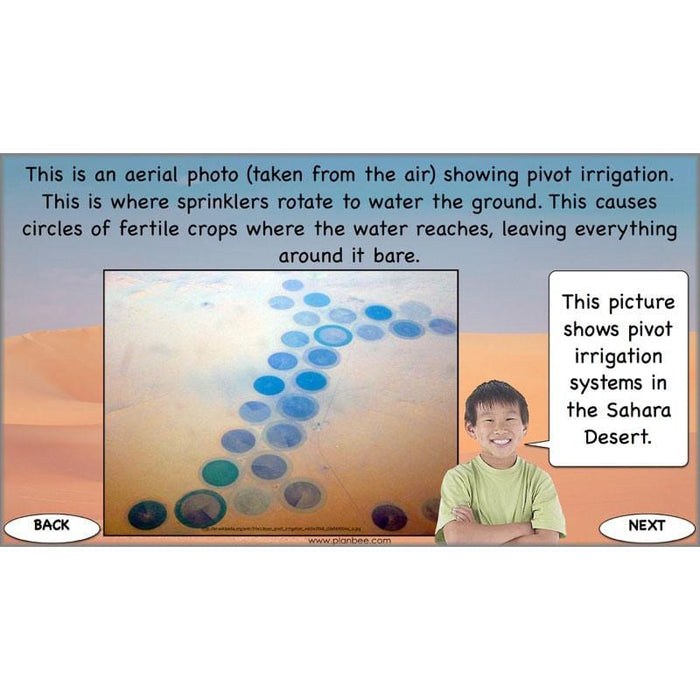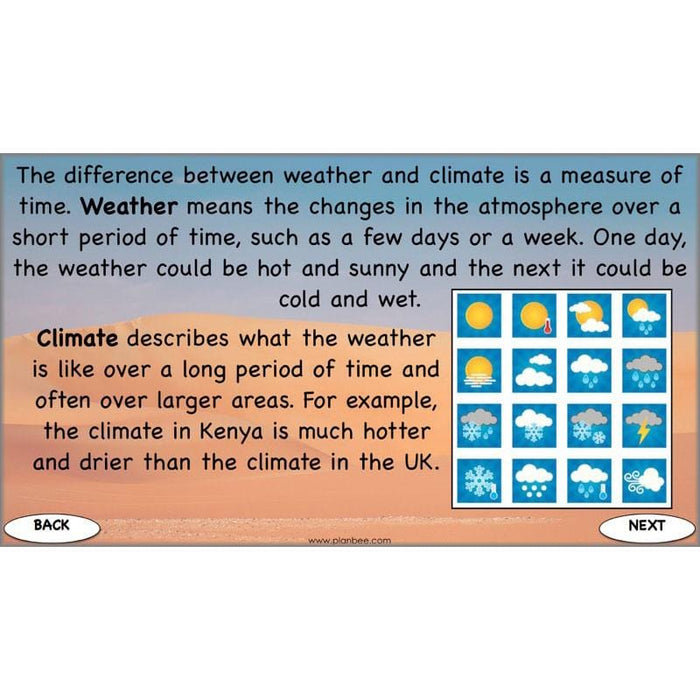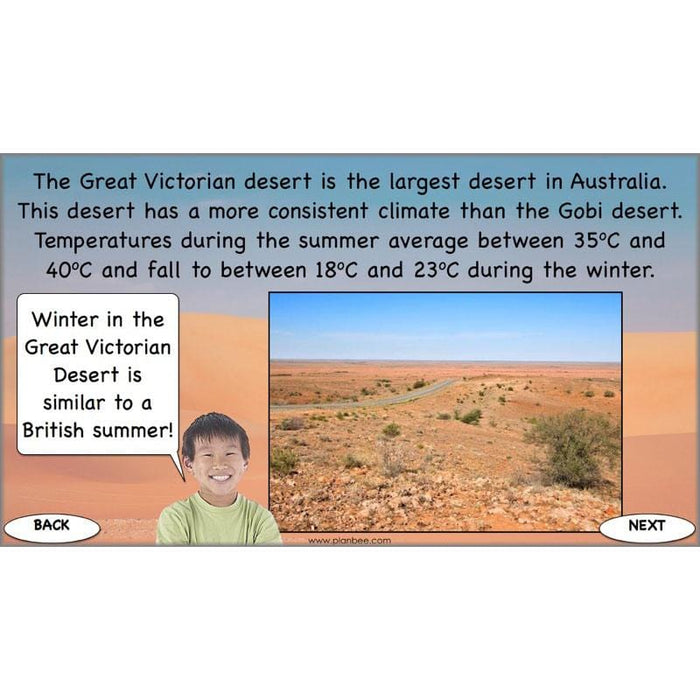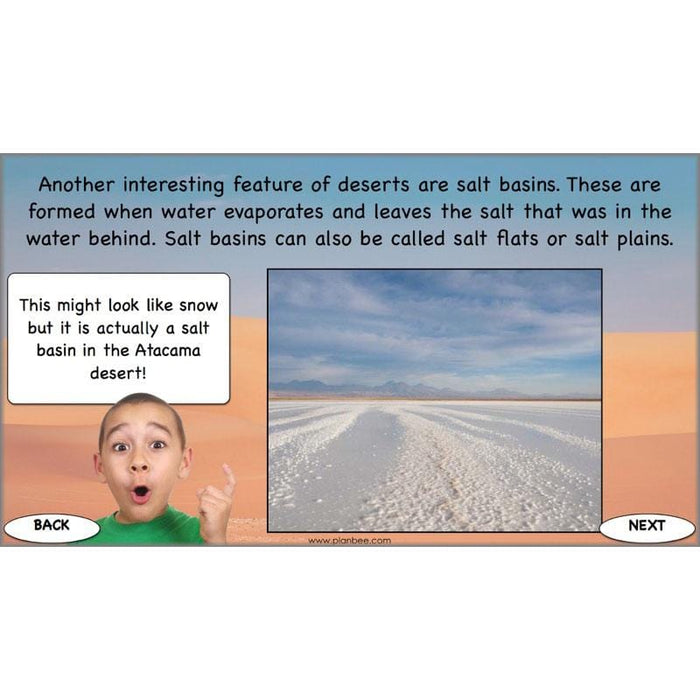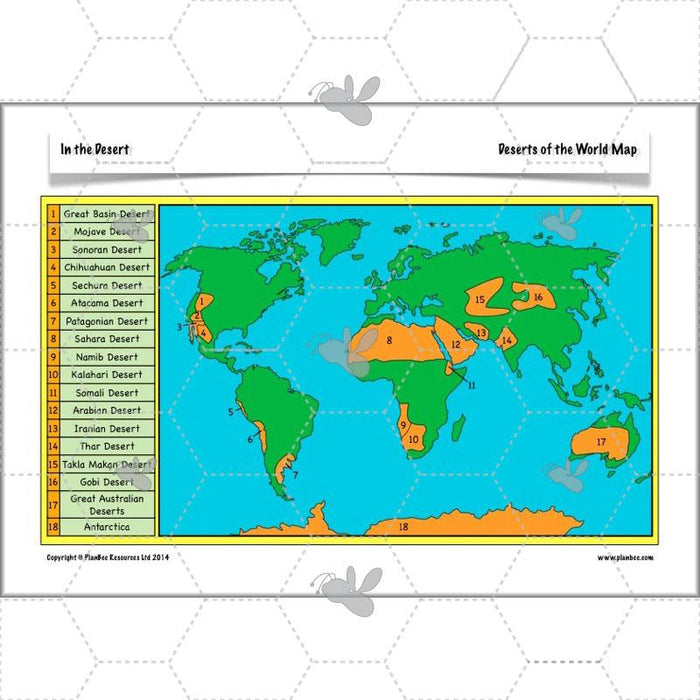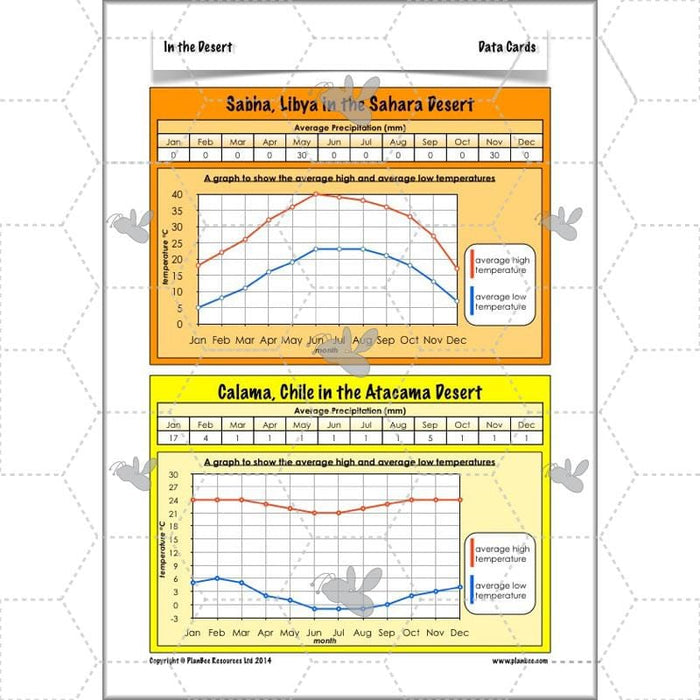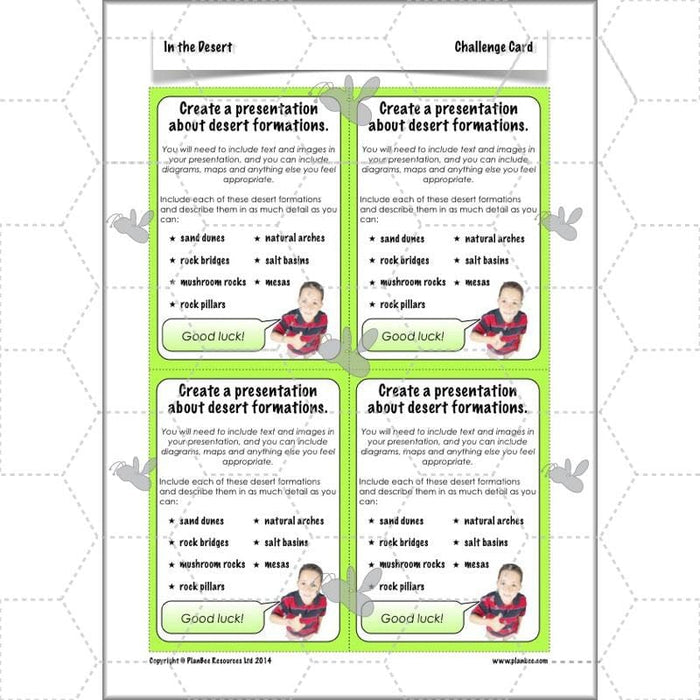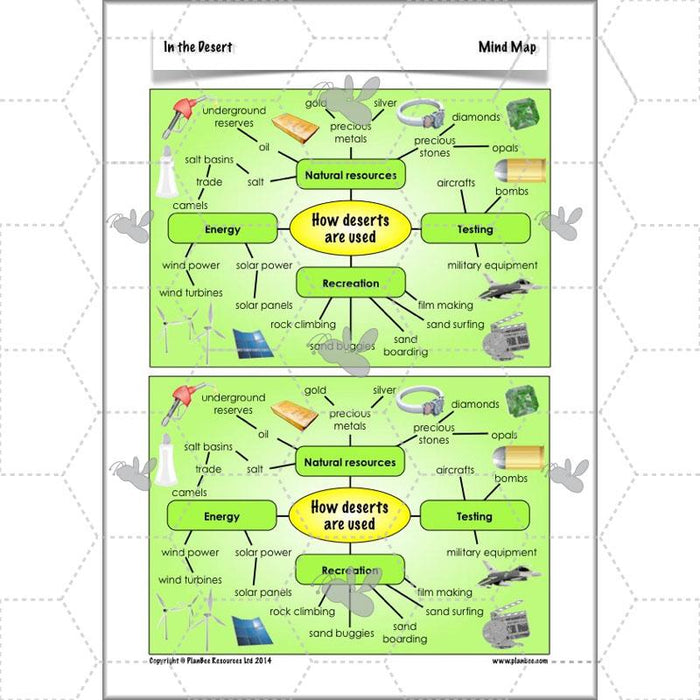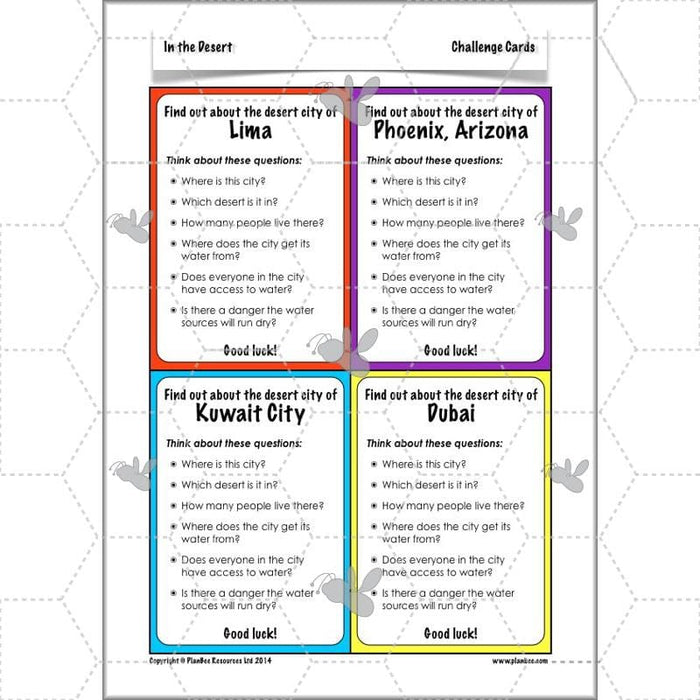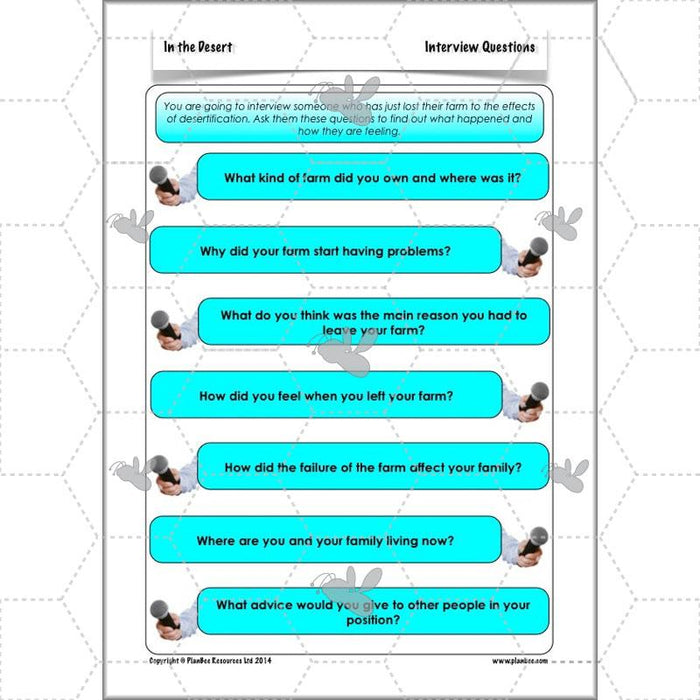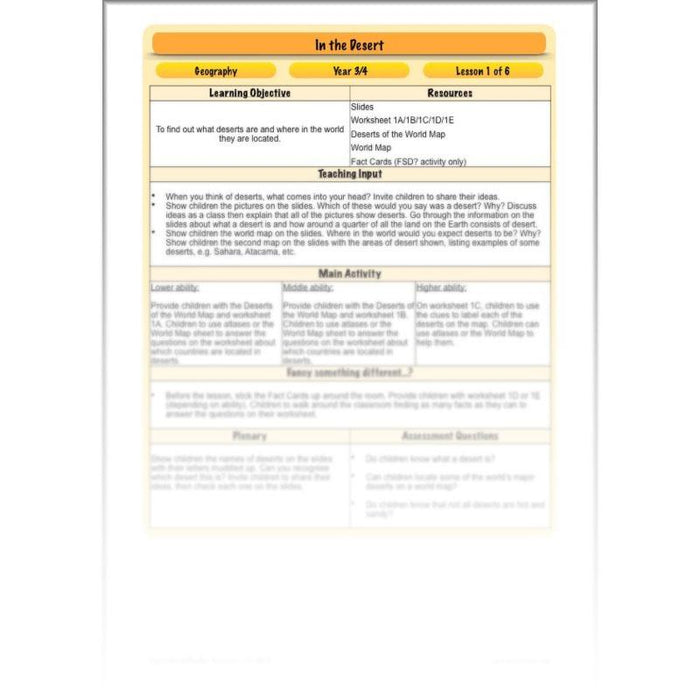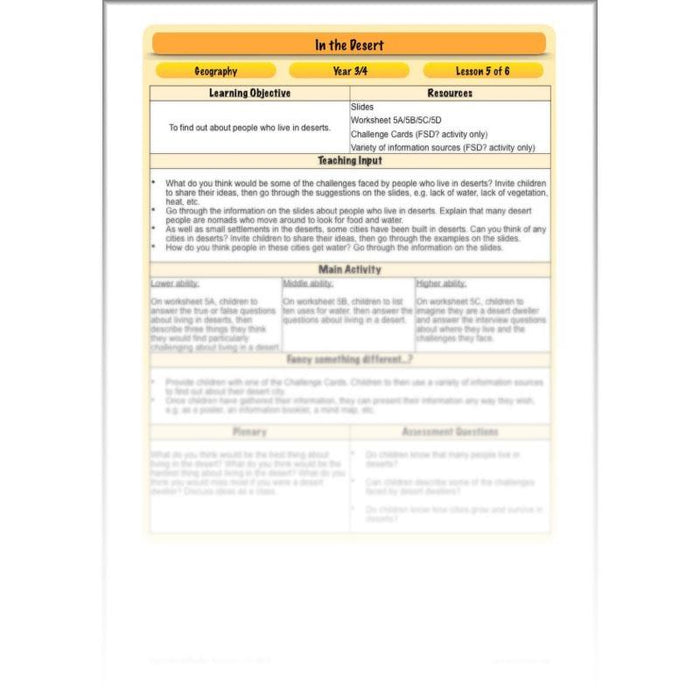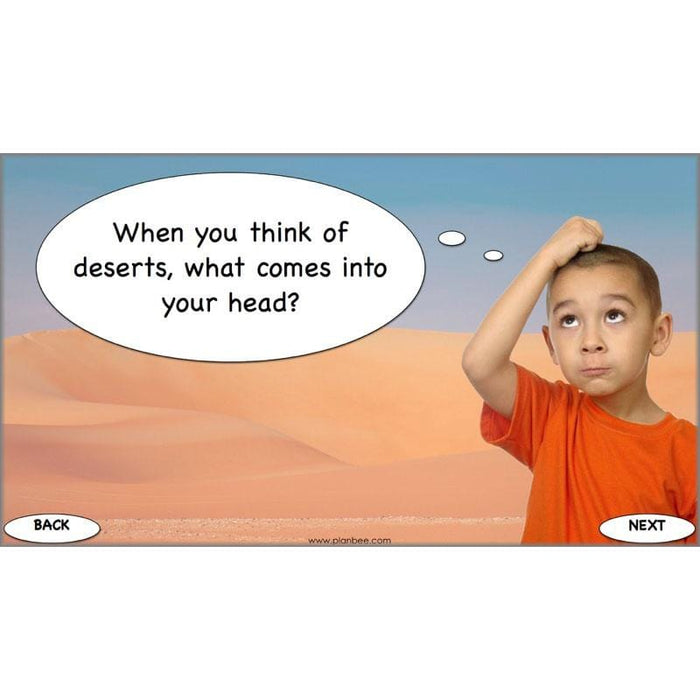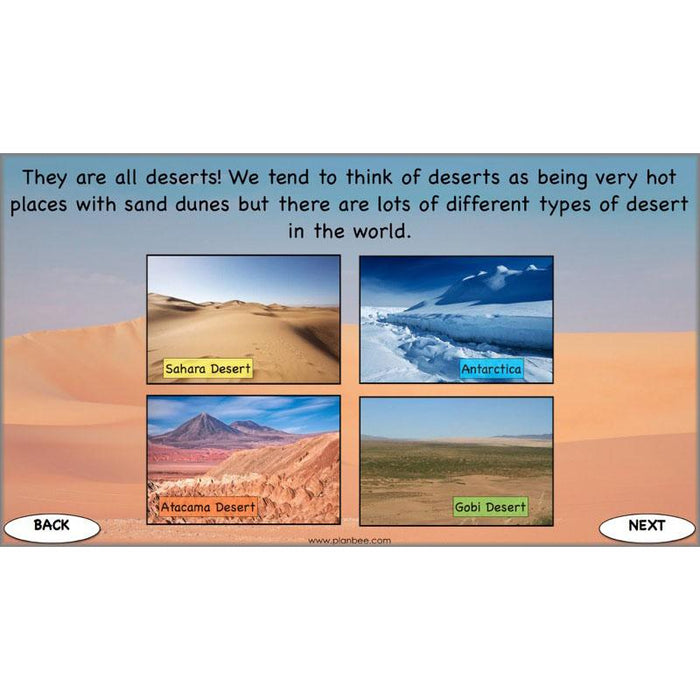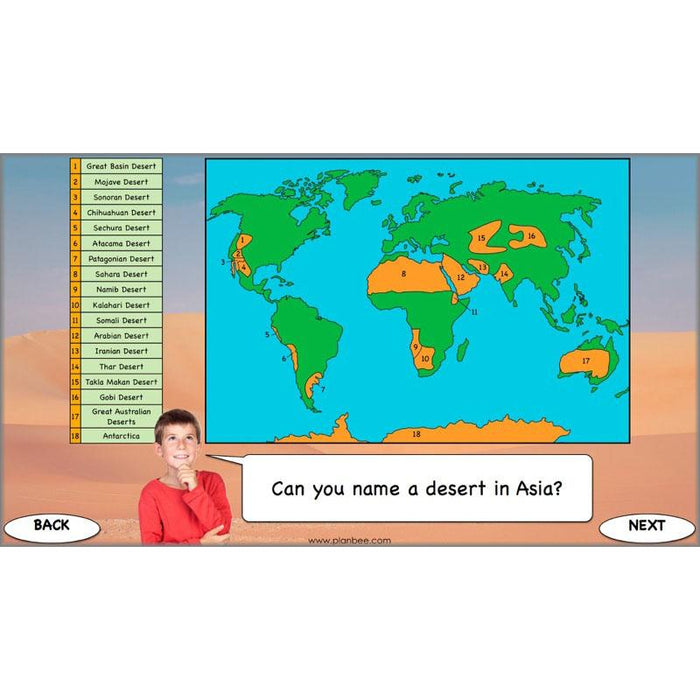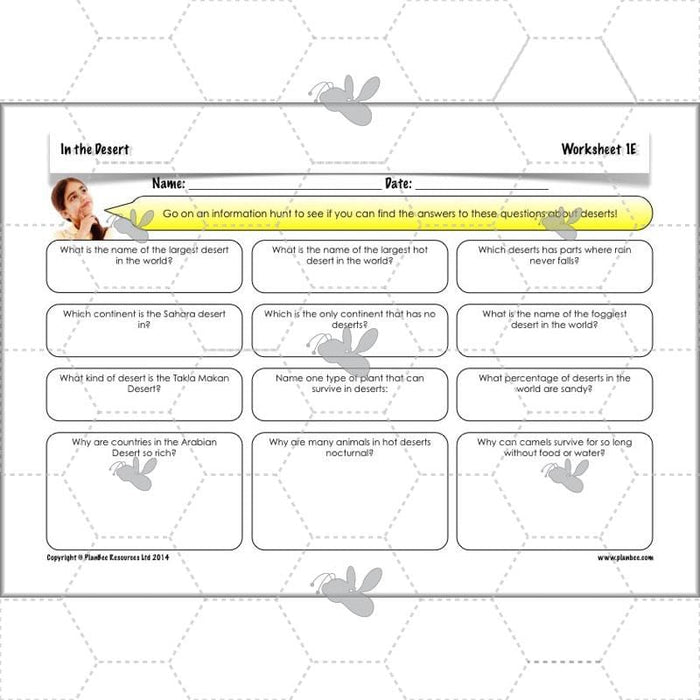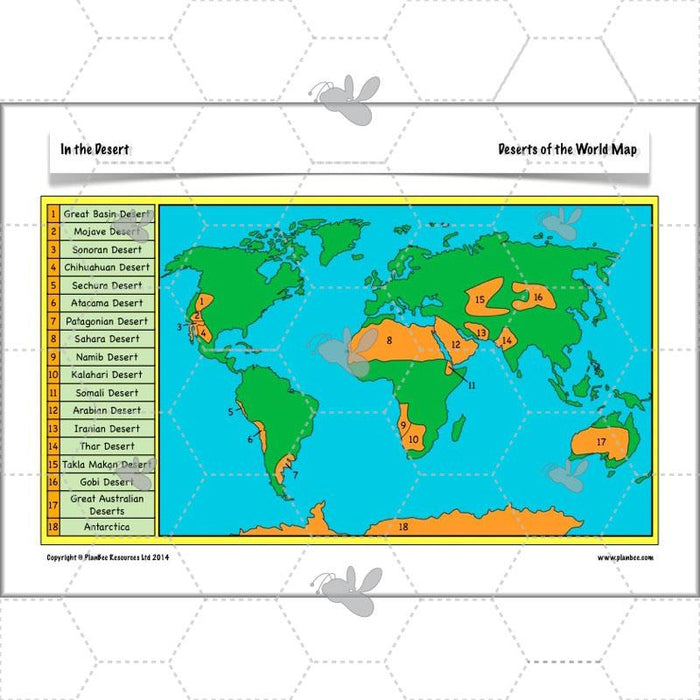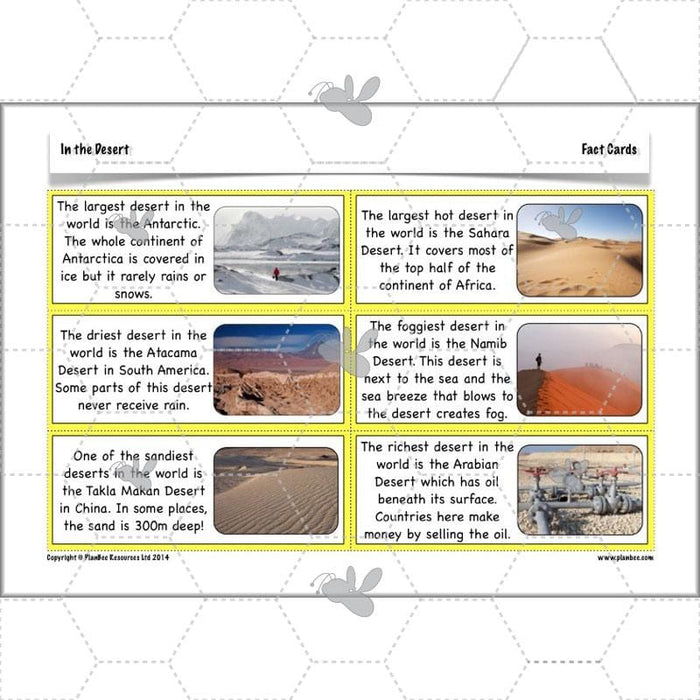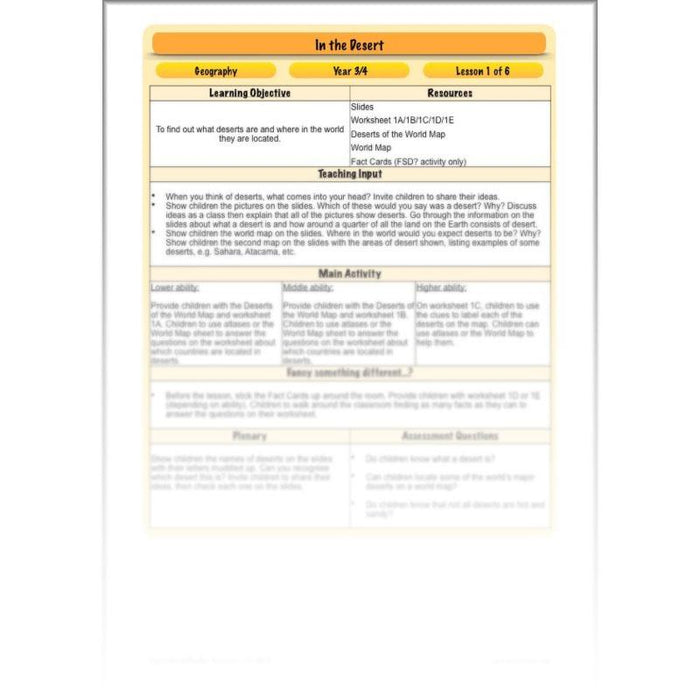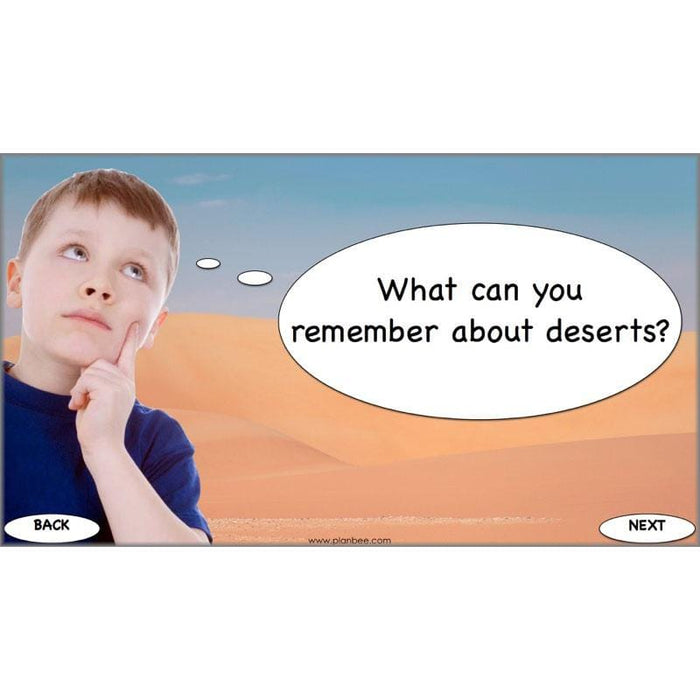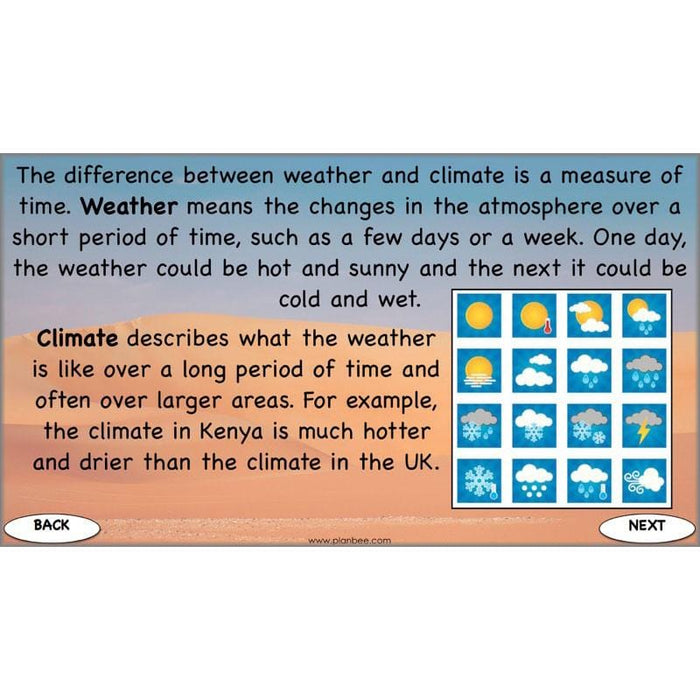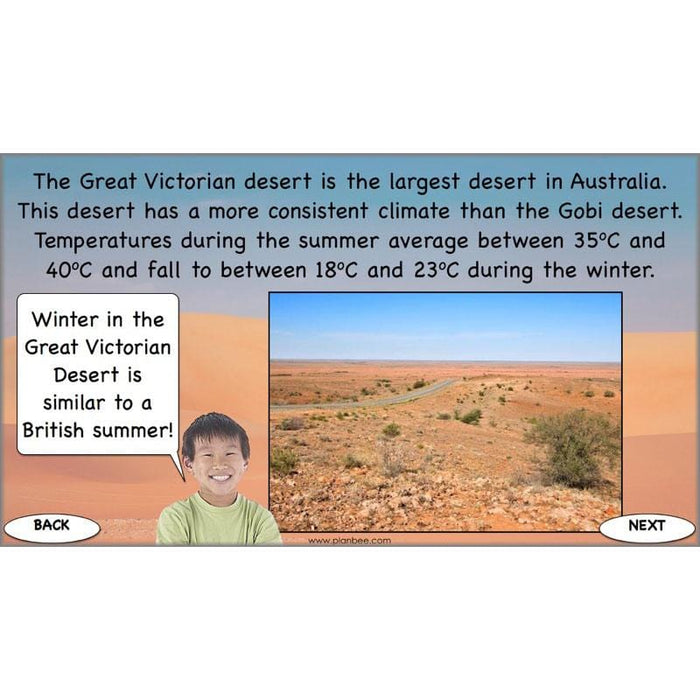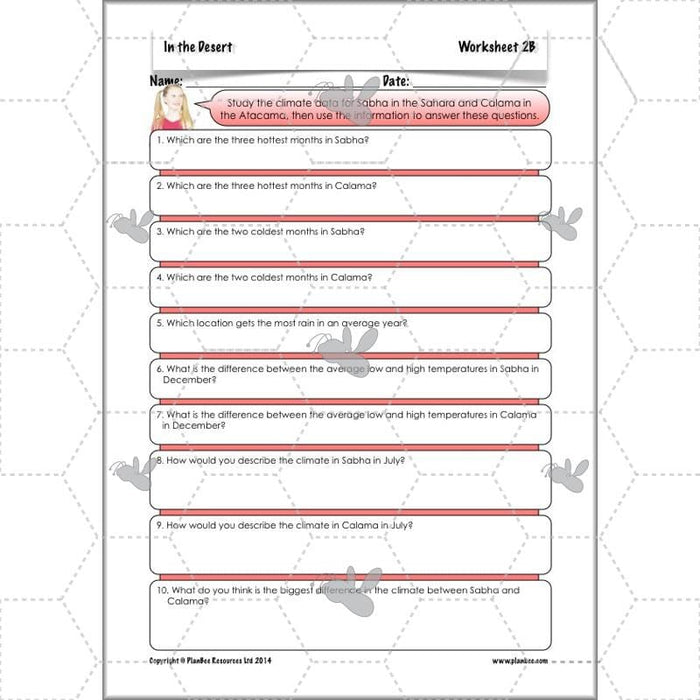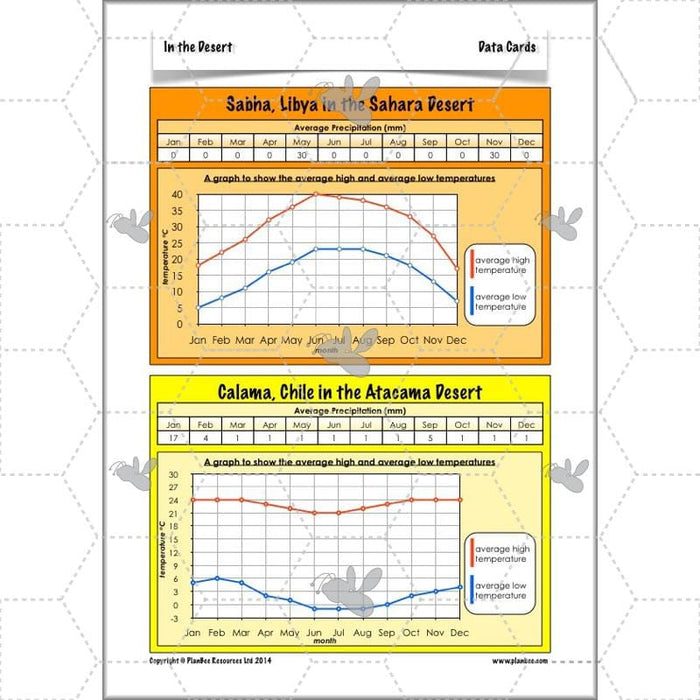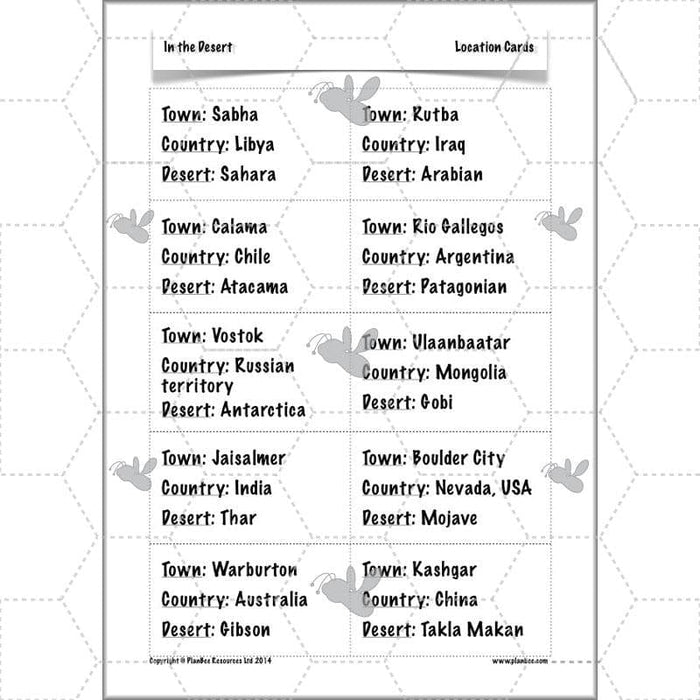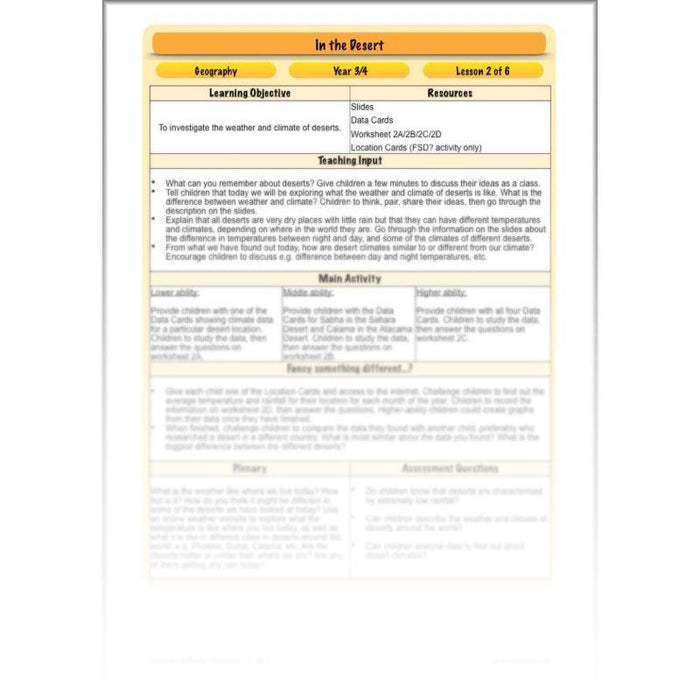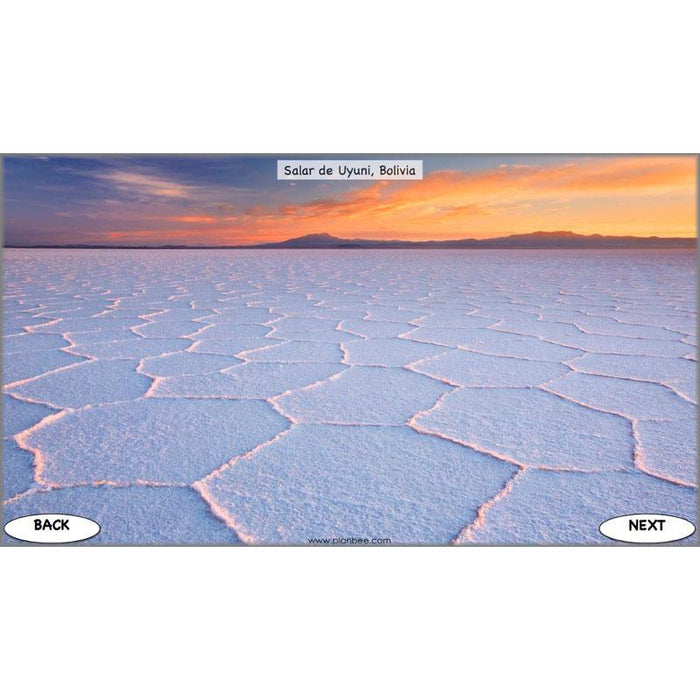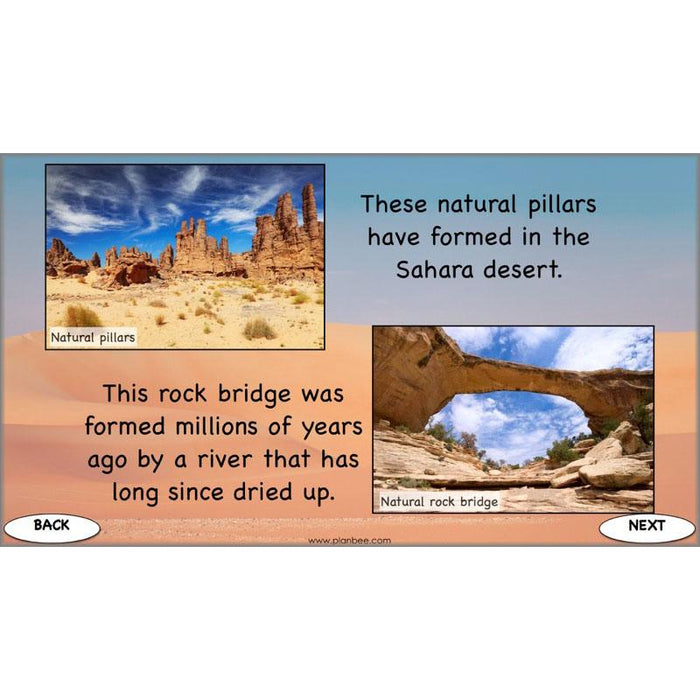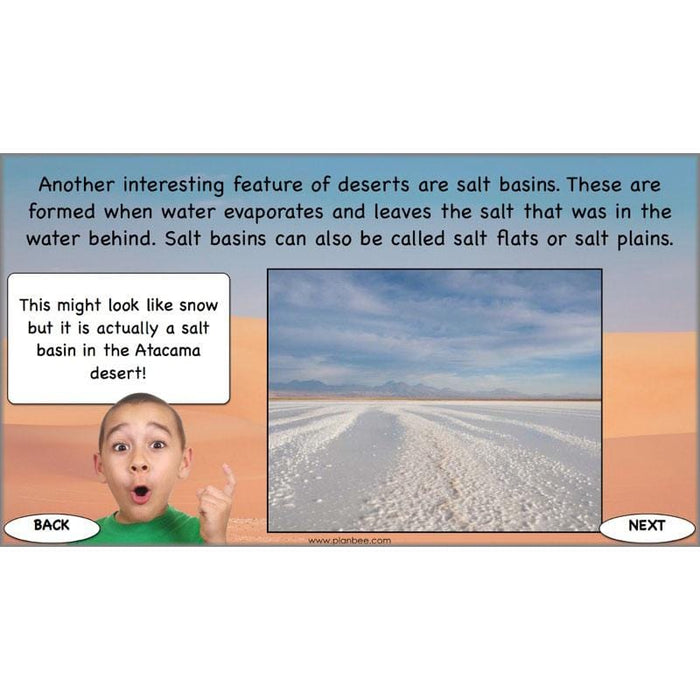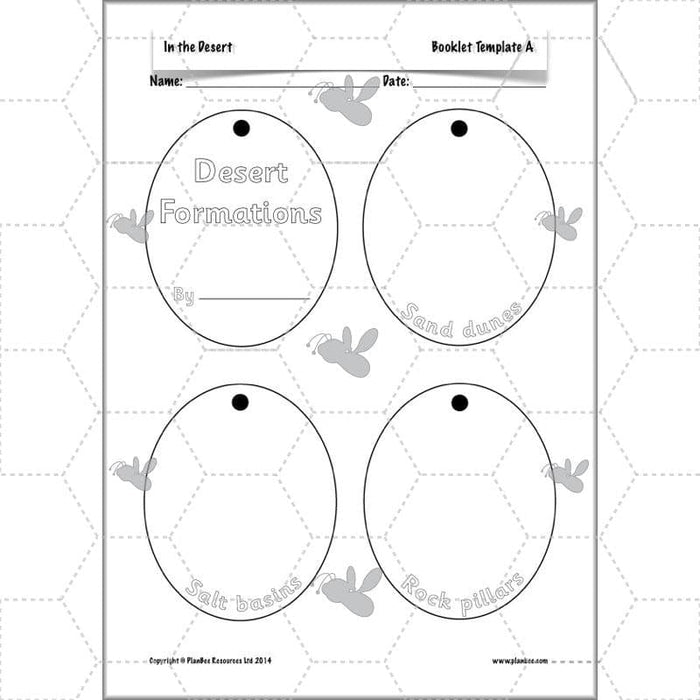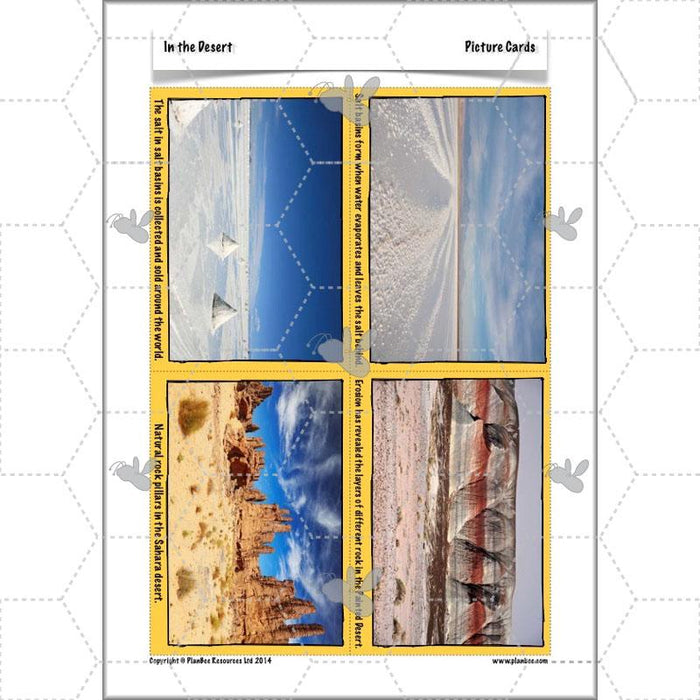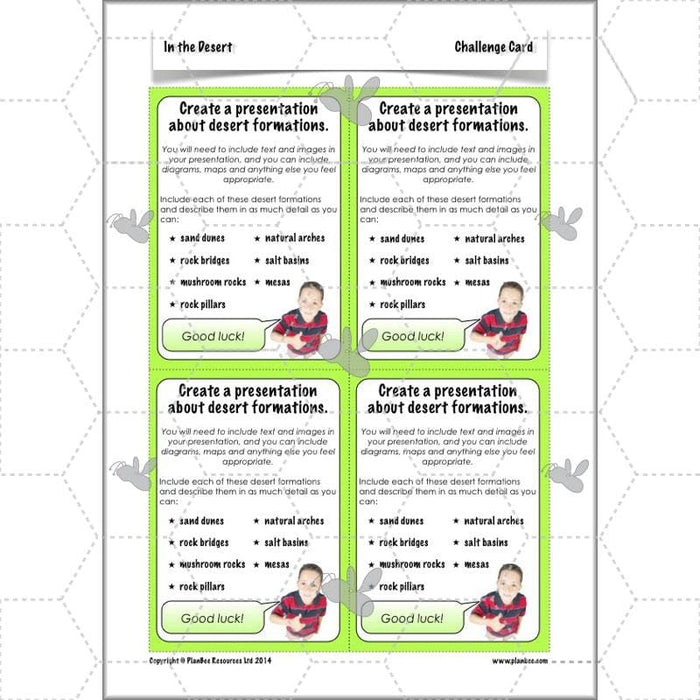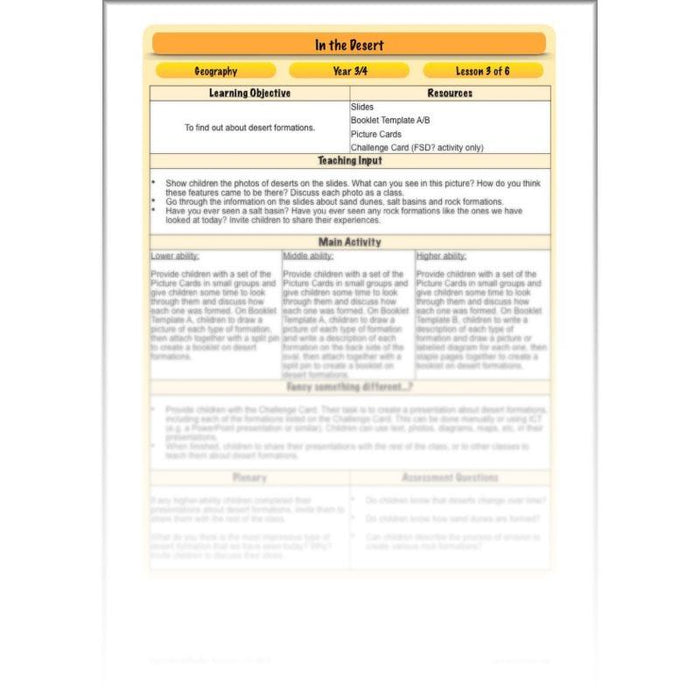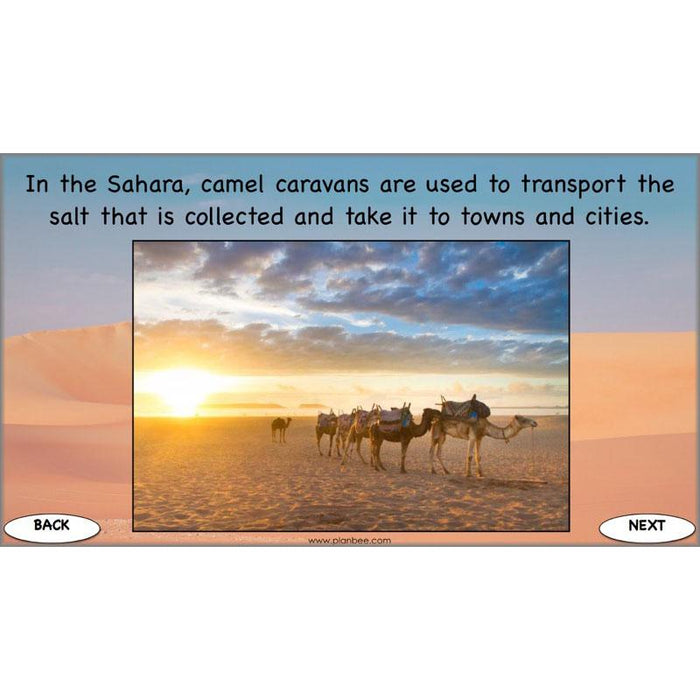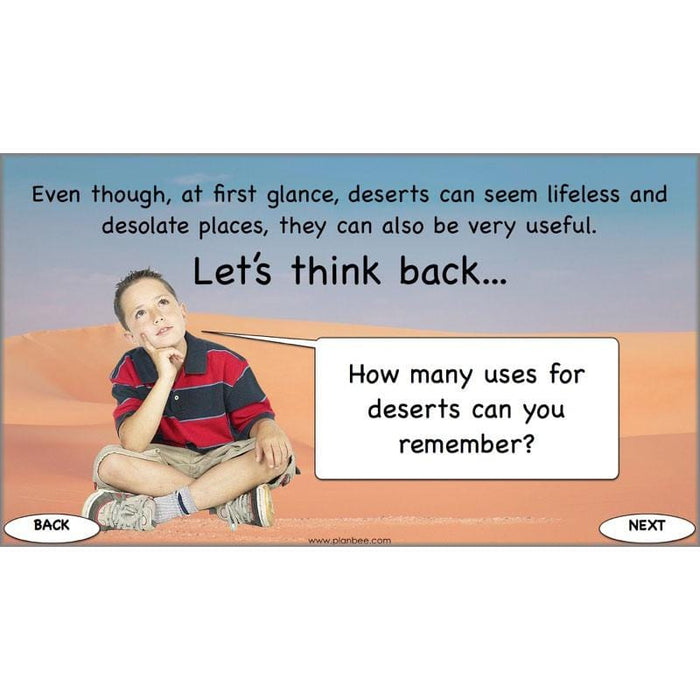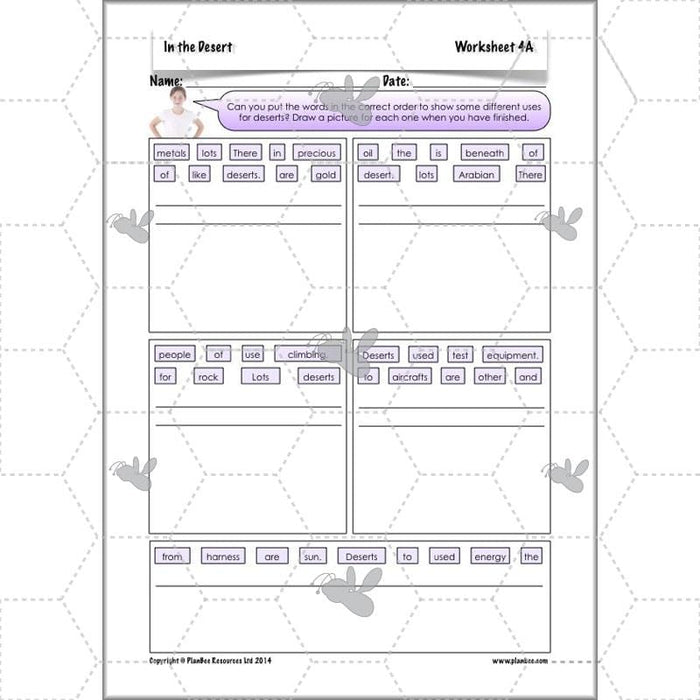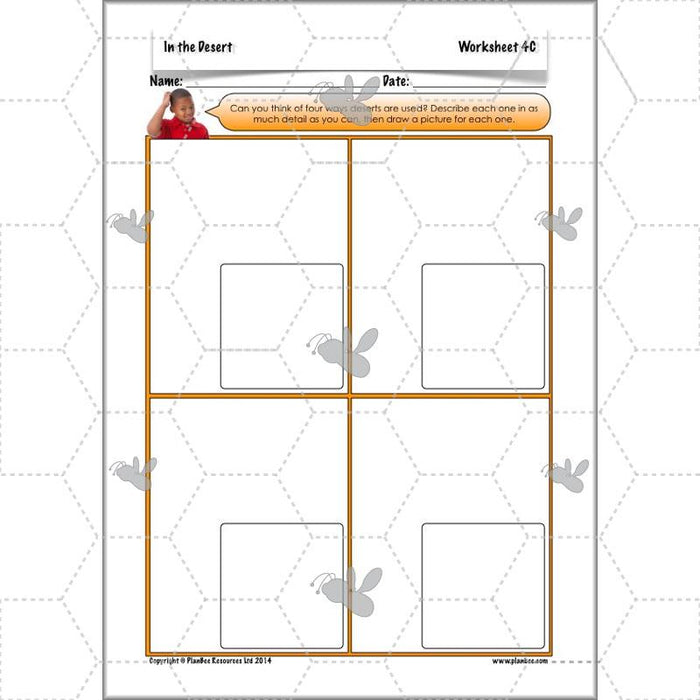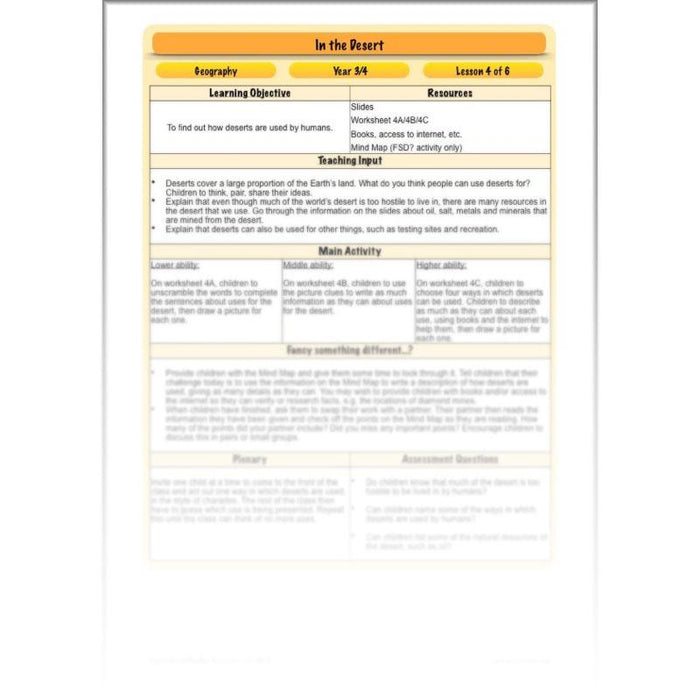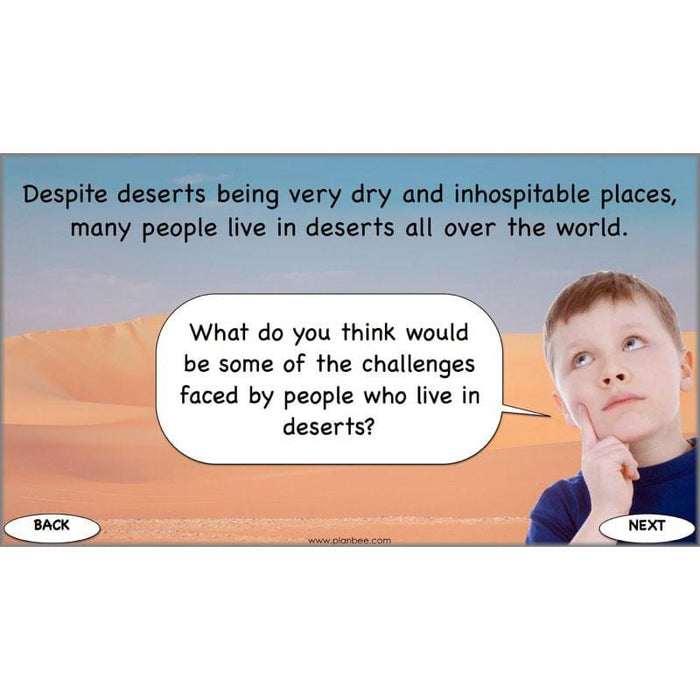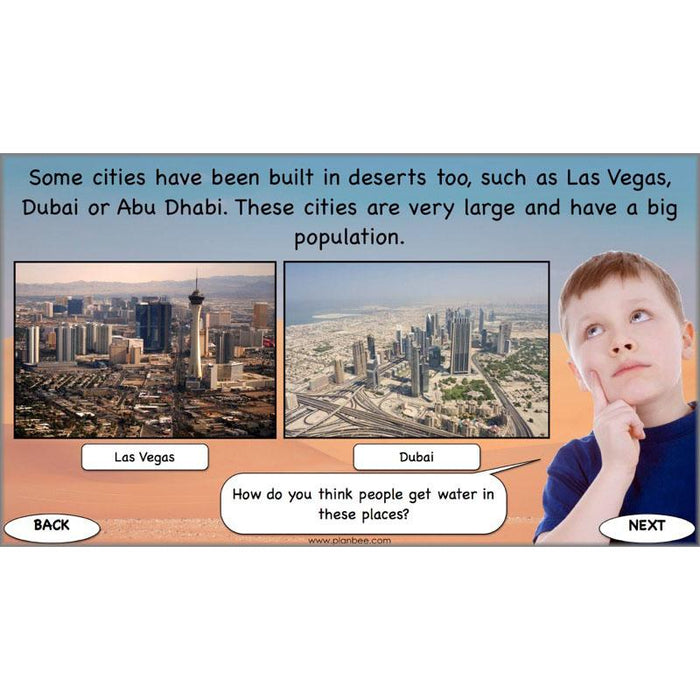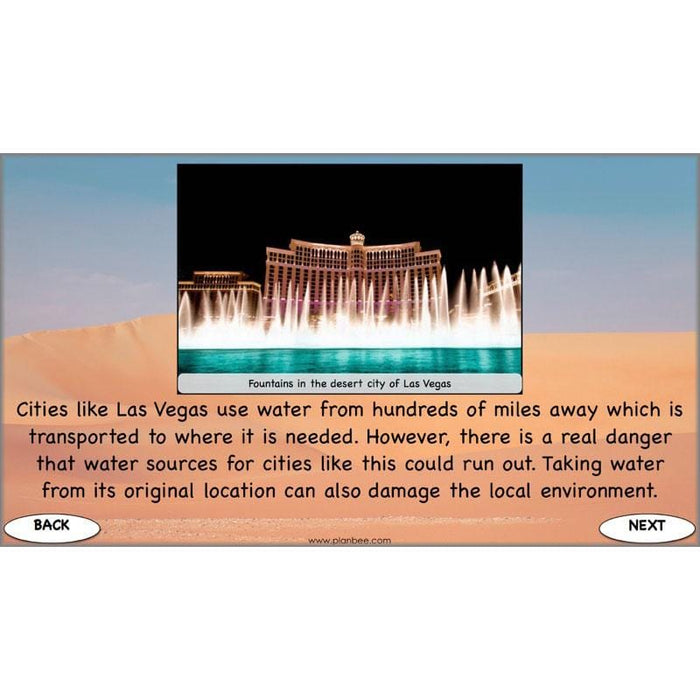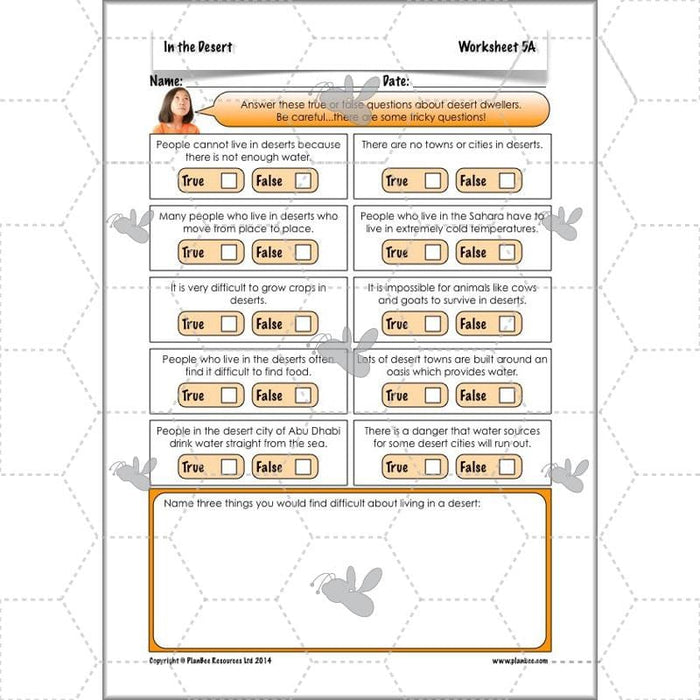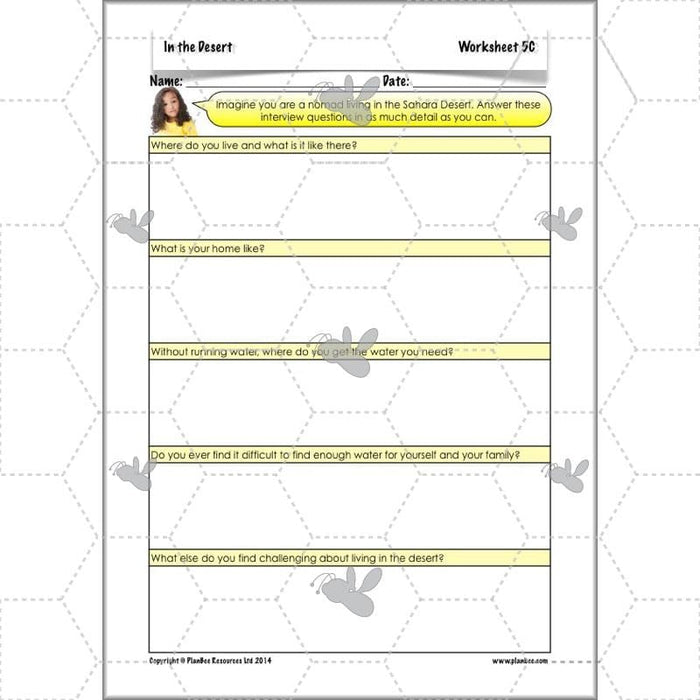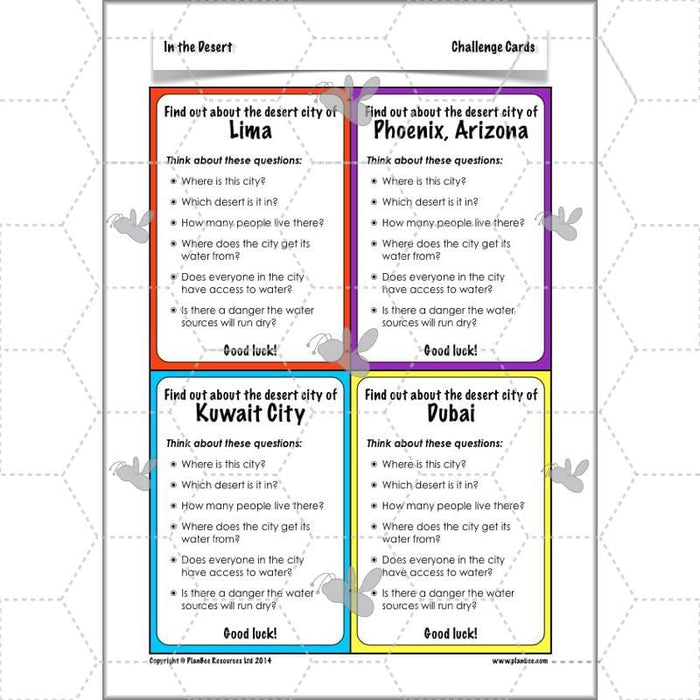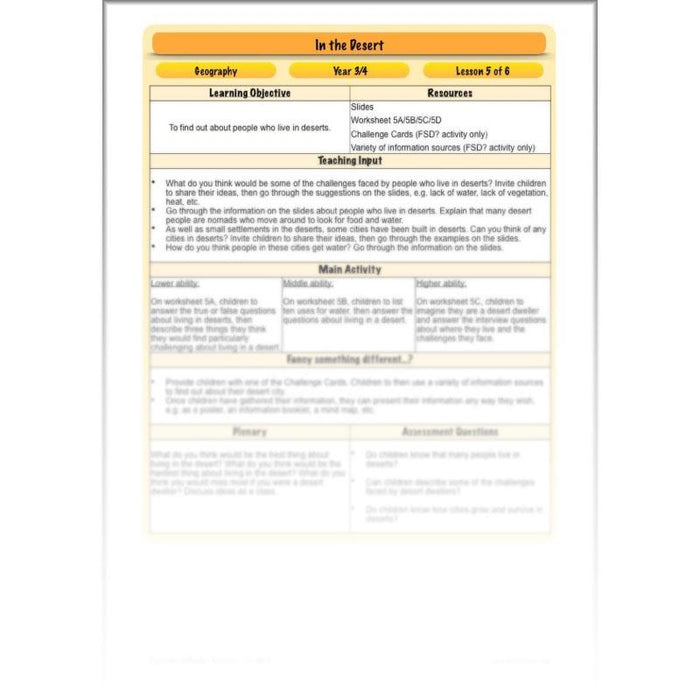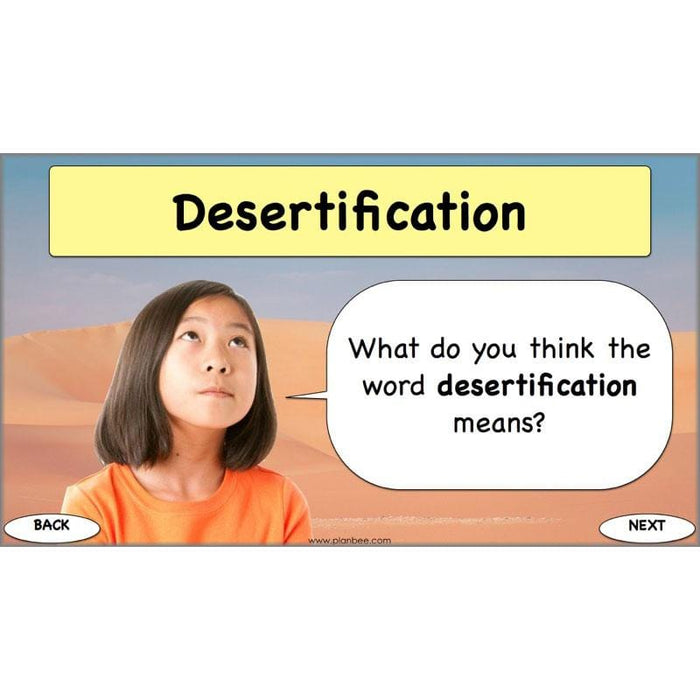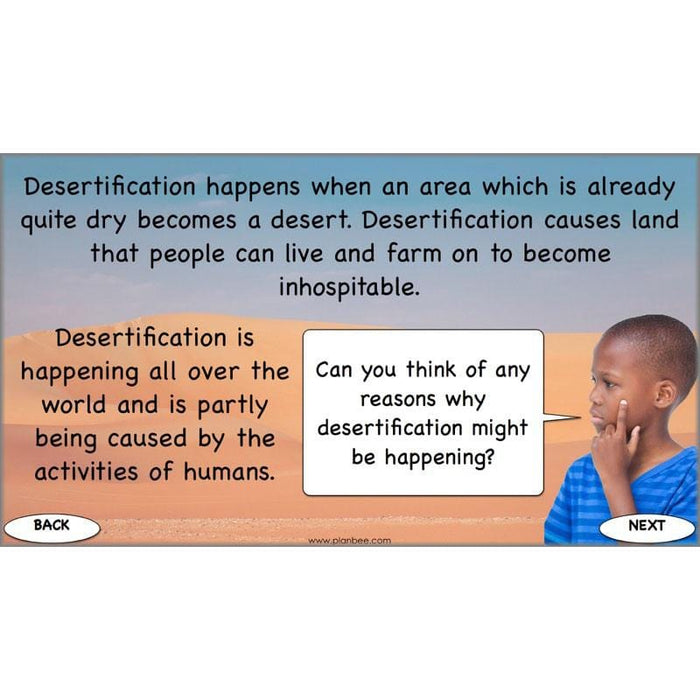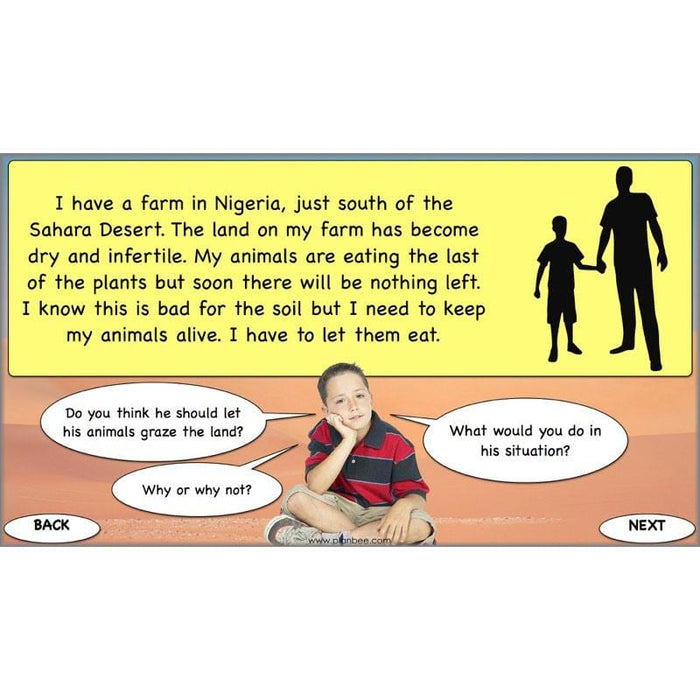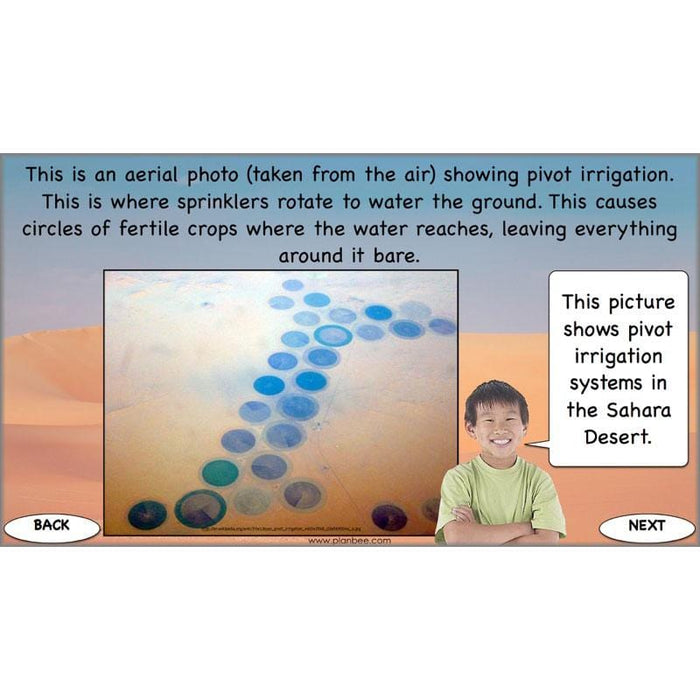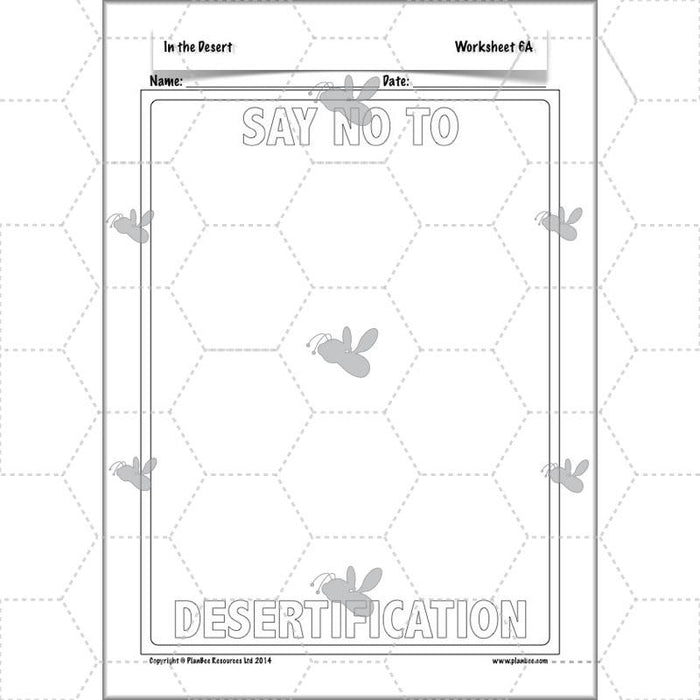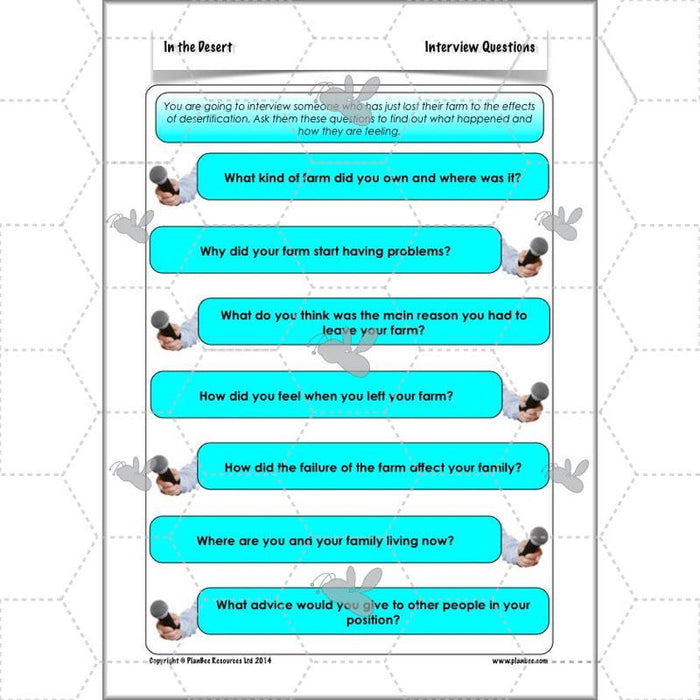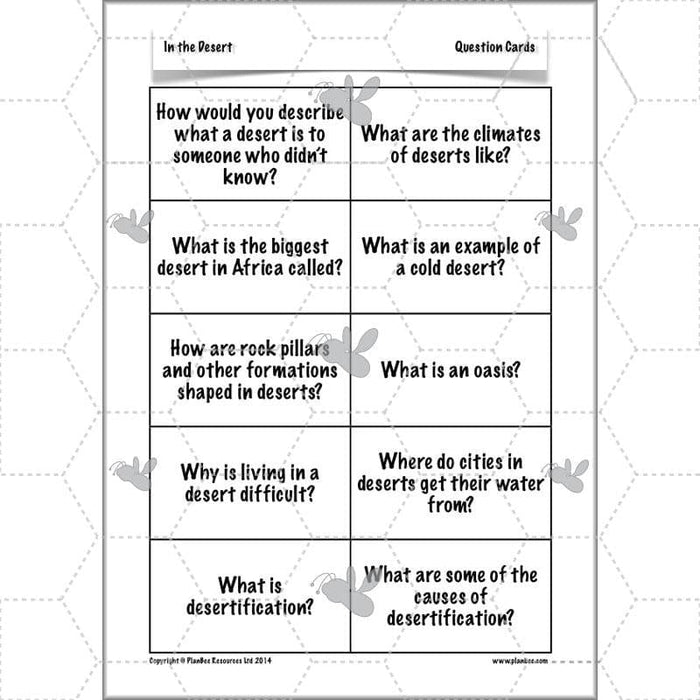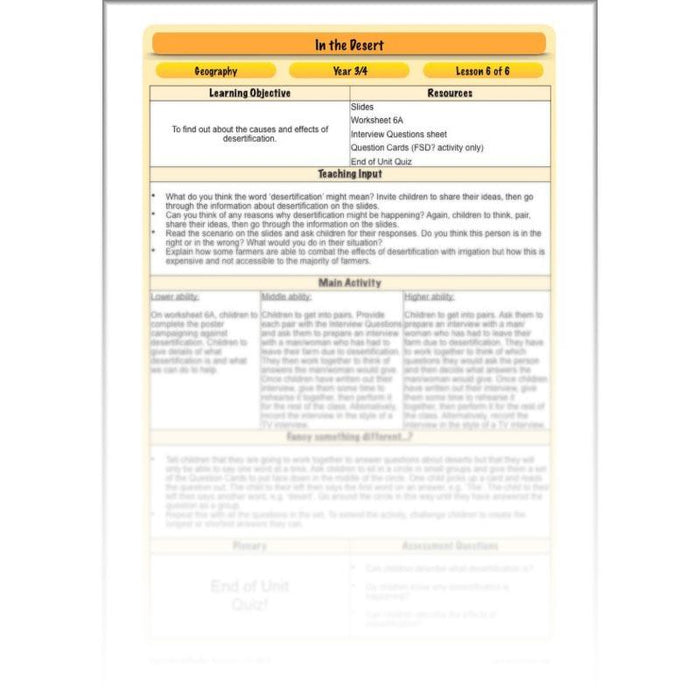#TheCompleteSeries6lessons
With lesson plans, exciting slides, activity ideas, differentiated worksheets, picture cards, graphs, and much more, these 'In the Desert' lessons provide everything you need to teach your class about deserts hot and cold from the Sahara to the Antarctic.
#Lesson1DesertLocations
This lesson teaches your class that there is more to deserts than sand dunes! They will learn what the definition of a desert is, and how this can apply to both hot and cold climates. They will then use different maps to identify, and name, the major deserts of the world.
What's included:
- Lesson plan
- Slides
- Activity ideas
- Differentiated worksheets
- Deserts of the world map
- World map
- Fact cards
#Lesson2DesertClimates
Now that your class knows that deserts are places that receive very little precipitation but this lesson gives them the chance to further explore and compare the various climates of deserts around the world. They will learn about how temperatures vary from night to day and season to season and use graphs and charts to analyse desert climates.
What's included:
- Lesson plan
- Slides
- Activity ideas
- Differentiated worksheets
- Data cards
- Location cards
#Lesson3DesertFormations
This lesson starts by showing your class photos of different desert formations for them to discuss before finding out about how erosion and other factors create desert formations such as arches, mushroom rocks, and mesas.
What's included:
- Lesson plan
- Slides
- Activity ideas
- Differentiated booklet templates
- Picture cards
- Challenge cards
#Lesson4DesertUses
Deserts appear to be desolate, useless places at first glance but this lesson encourages your class to dig a little deeper as they find out about some of the ways in which deserts are used by humans. They will find out about some of the natural resources found in deserts, such as oil, salt, gold and diamonds, as well as how deserts are used for recreation, testing and other purposes.
What's included:
- Lesson plan
- Slides
- Activity ideas
- Differentiated worksheets
- Mind map
#Lesson5DesertDwellers
This lesson looks at the various people, towns and cities of deserts and explores how they survive in such a harsh environment. They will learn about oases, nomads and small desert towns, before exploring how large cities such as Las Vegas and Dubai get the water they need to survive.
What's included:
- Lesson plan
- Slides
- Activity ideas
- Differentiated worksheets
- Challenge cards
#Lesson6Desertification
The final lesson in this series investigates what desertification is and why it is happening to deserts around the world. Your children will find out how over-farming and over-grazing, as well as pollution, are causing deserts to grow and swallow up fertile farmland, and what can be done to prevent this.
What's included:
- Lesson plan
- Slides
- Activity ideas
- Worksheet
- Interview questions sheet
- Question cards
- End of unit quiz
Free Overview (Medium-Term Plan)
Download a free overview to support your teaching of this scheme of work.
Free Assessment Grid
Download a free, editable assessment grid to support your teaching of this scheme of work.
Curriculum Objectives covered
- KS2 - locate the world’s countries, using maps to focus on Europe (including the location of Russia) and North and South America, concentrating on their environmental regions, key physical and human characteristics, countries, and major cities
- KS2 - describe and understand key aspects of physical geography, including: climate zones, biomes and vegetation belts, rivers, mountains, volcanoes and earthquakes, and the water cycle
- KS2 - describe and understand key aspects of human geography, including: types of settlement and land use, economic activity including trade links, and the distribution of natural resources including energy, food, minerals and water
- KS2 - use maps, atlases, globes and digital/computer mapping to locate countries and describe features studied
